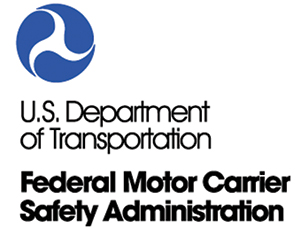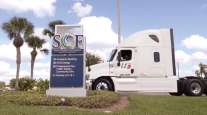Staff Reporter
FMCSA Proposes Expanding Specialties for Military Driver Pilot Program

[Stay on top of transportation news: Get TTNews in your inbox.]
The Federal Motor Carrier Safety Administration is proposing to expand the military occupational specialties associated with its pilot program that allows people between the ages of 18 and 20 who possess the U.S. military equivalent of a commercial driver license to operate trucks in interstate commerce.
Under the proposal, the military occupational specialties will be expanded by nine positions as an effort to provide additional service members with opportunities in trucking, according to a notice scheduled for publication in the Federal Register on Oct. 9.
They include roles as combat engineer, field artillery cannoneer and Patriot launching station operator. Patriot refers to an advanced missile system.
FMCSA Request to Expand Military Driver Pilot Program by Transport Topics on Scribd
“Each of these proposed additions requires drivers to complete classroom and road training prior to receiving the [military occupational specialty] designation, as well as ongoing training and routine recertification on heavy vehicle operations,” the Federal Register document states. “Military personnel in these [military occupational specialties] receive continuous training during their service period to maintain proficiency.”
Seven military occupational specialties were originally approved for the program, including roles as motor transport operator, fueler, and pavement and construction equipment operator.

The pilot, launched in June 2019 and outlined in the Fixing America’s Surface Transportation (FAST) Act, allows a limited number of 18- to 20-year-olds to drive trucks interstate as long as they possess the military equivalent of a CDL and are sponsored by a participating trucking company.
Current federal law does not allow operators younger than 21 to drive Class 8 commercial motor vehicles across state lines.
RELATED: FMCSA Pilot Would Allow Younger Drivers in Interstate Commerce
According to the Federal Register, training requirements for the nine proposed specialties are equivalent to those required for the program’s original seven specialties. The document states that the Army and the Marine Corps recommended the addition of these specialties.
They were not included previously because FMCSA was not aware these classifications required heavy vehicle training.

A motor transport operator drives the M1070 Heavy Equipment Transporter at Fort Indiantown Gap, Pa. (DIVIDS)
“By increasing the [military occupational specialties], FMCSA anticipates there will be an additional 30,000 drivers between the ages of 18 and 21 who are eligible to participate in the Under 21 Military CDL Pilot Program,” the Federal Register document states.
In 2019, American Trucking Associations estimated the industry was lacking 60,800 drivers at the end of 2018. ATA also found that the industry could be short more than 100,000 drivers in five years if conditions don’t change.
Under the FAST Act, the pilot program is required to collect and analyze data regarding crashes involving “covered drivers” participating in the pilot program, as well as drivers younger than 21 participating in intrastate commerce. A covered driver is defined as a member, or former member, of the armed forces between the ages of 18 and 21 who is qualified to operate a commercial motor vehicle in a military capacity.
The Secretary of Transportation is required to monitor and evaluate the pilot program in consultation with a working group made up of industry representatives, drivers, armed forces personnel, safety advocates and enforcement officials.
FMCSA is requesting public comments on the need for (and advisability of) including the additional military occupational specialties in the pilot program.
Want more news? Listen to today's daily briefing:
Subscribe: Apple Podcasts | Spotify | Amazon Alexa | Google Assistant | More




